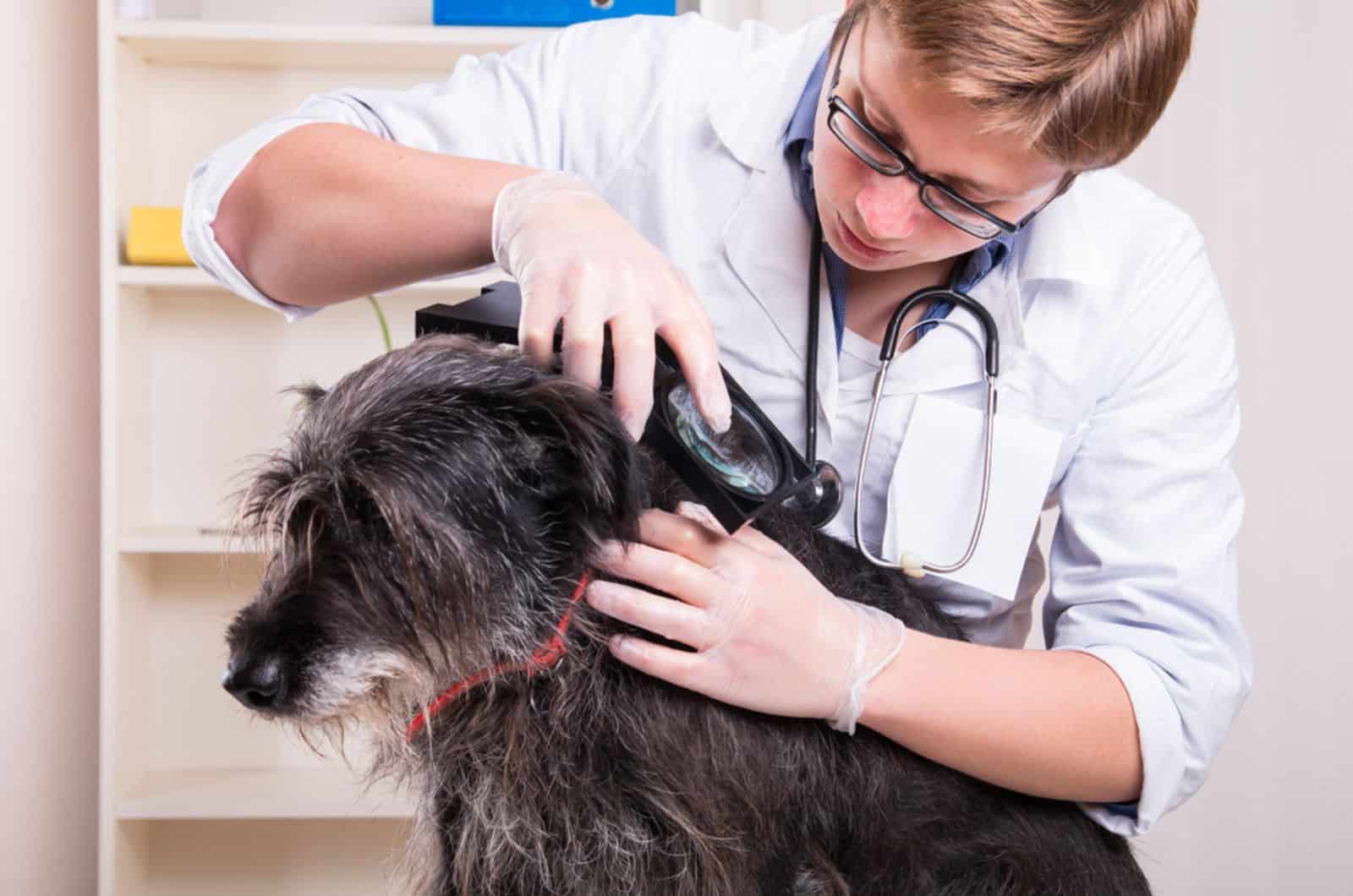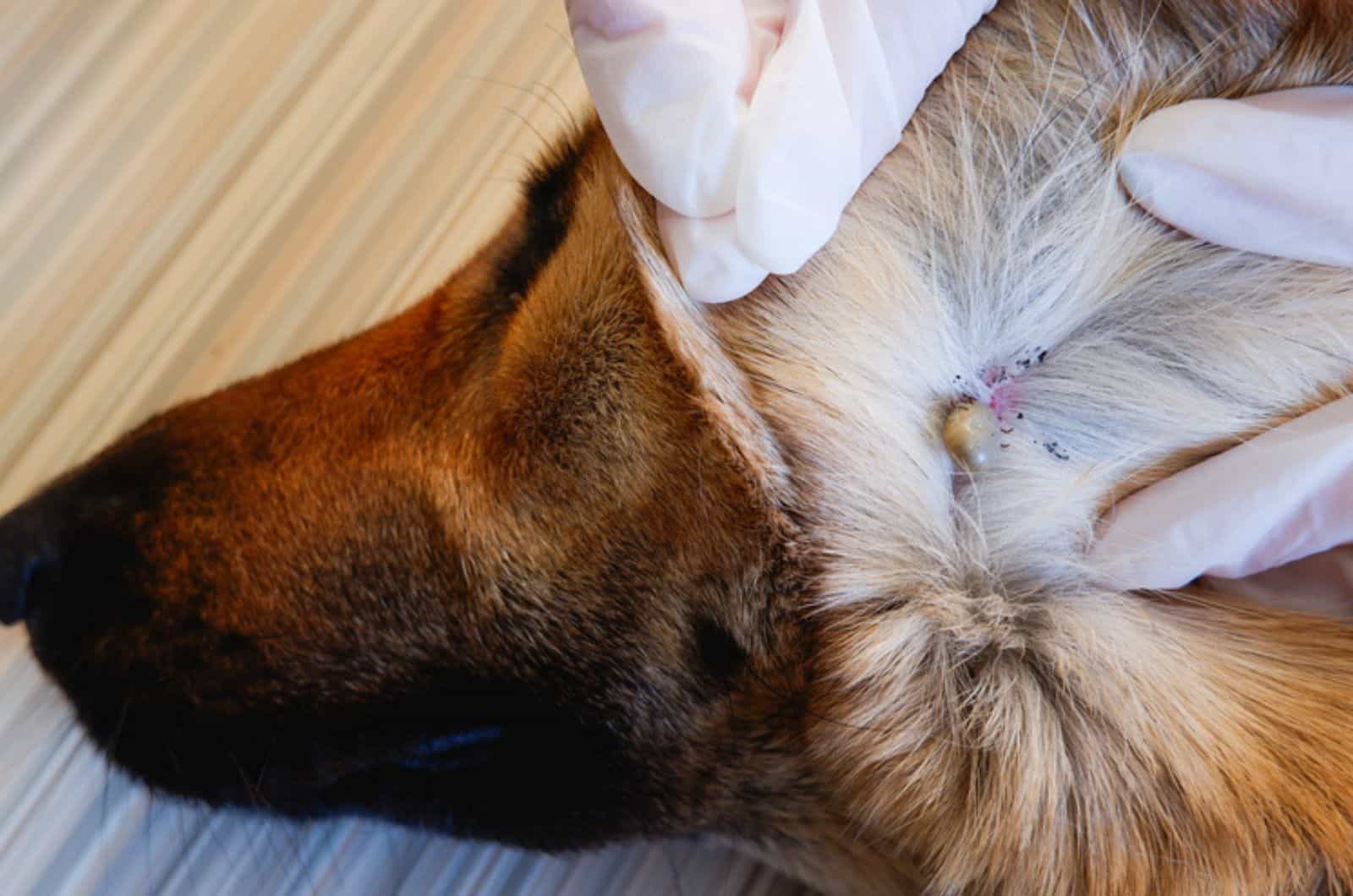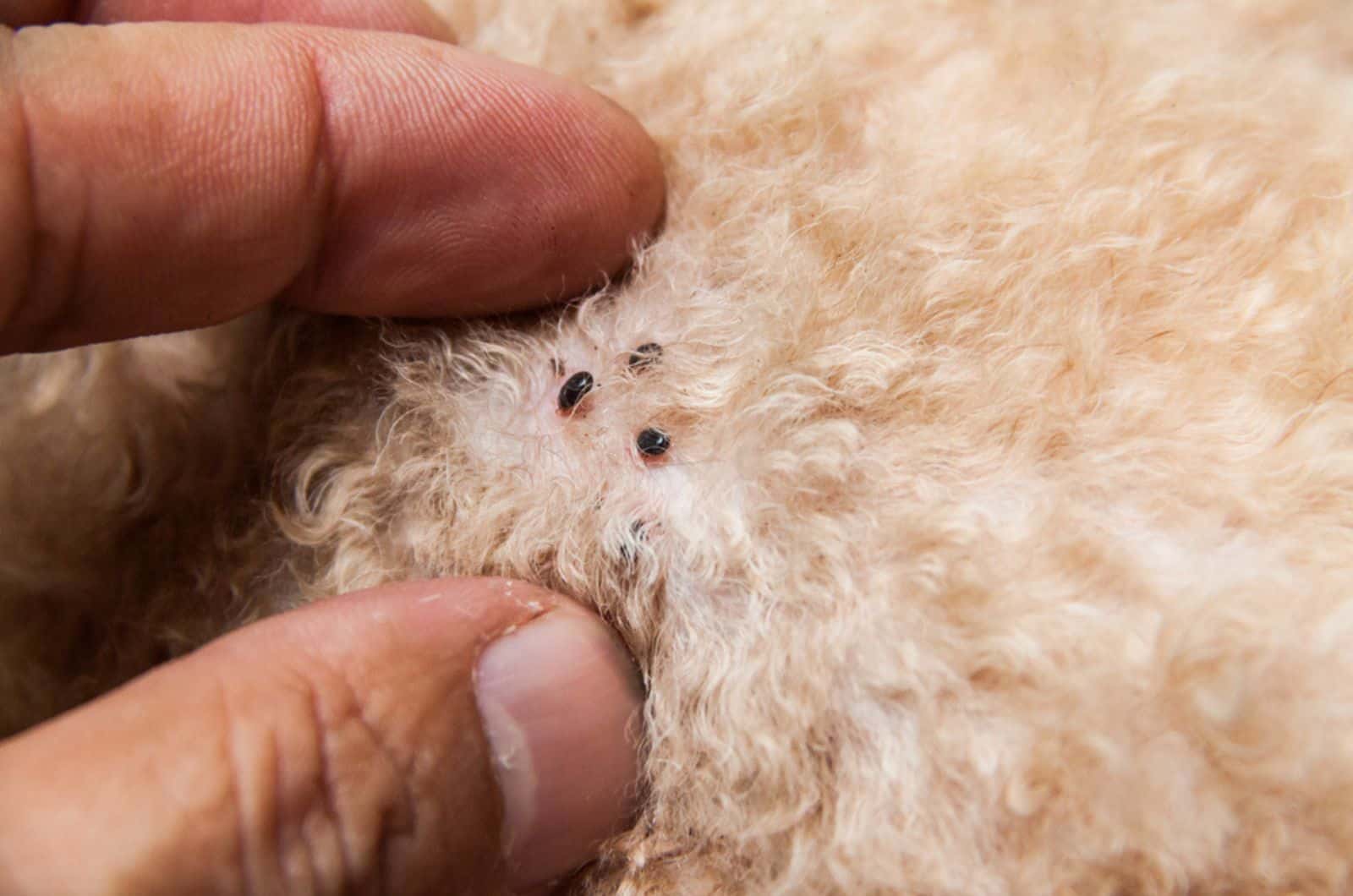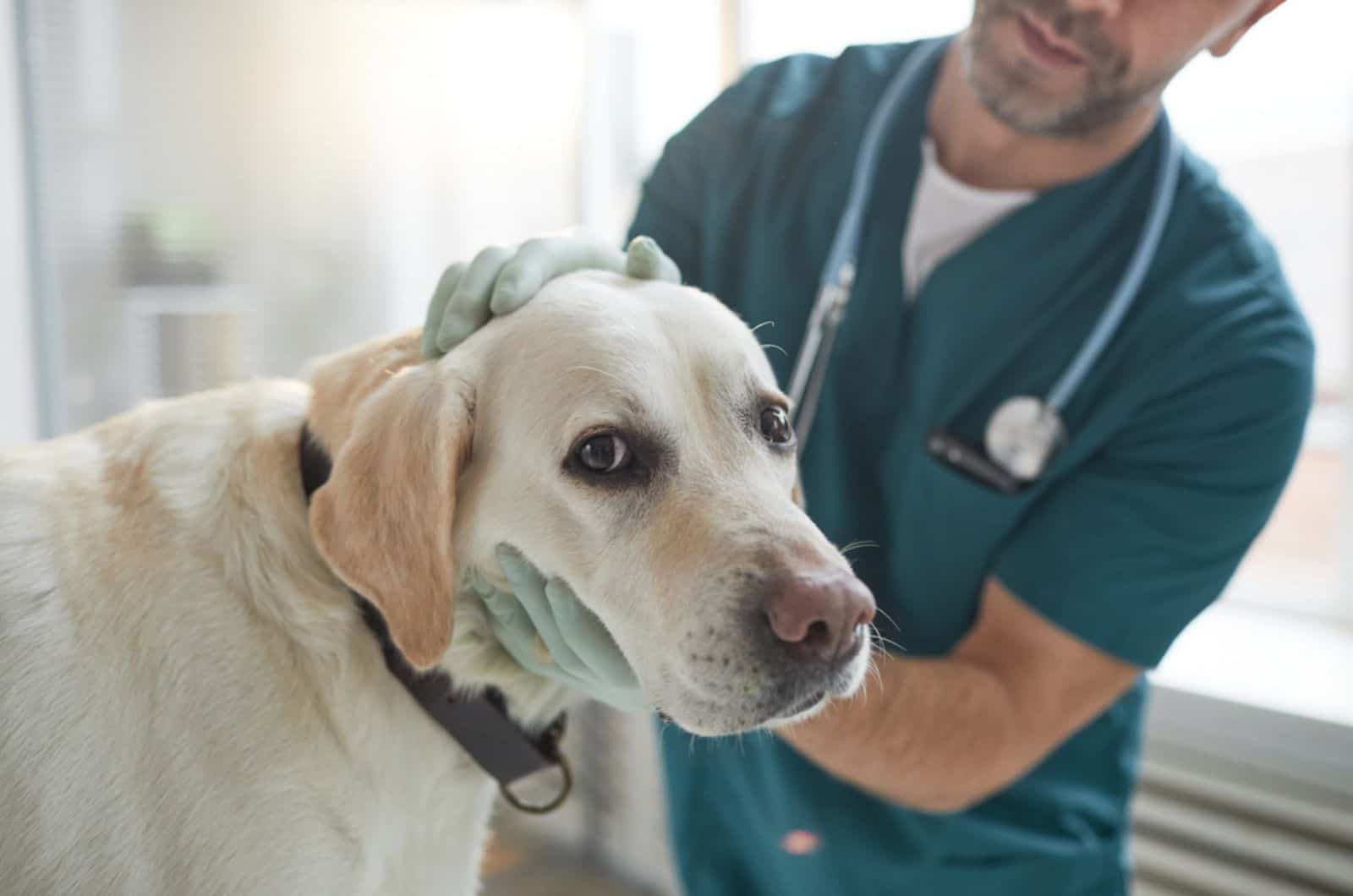Did you know that according to the Companion Animal Parasite Council, approximately 34% of dogs in the United States are infected with intestinal parasites?
Also, there are over 100 veterinary internal parasites found in dogs, cats, small mammals, reptiles, and birds.
That’s a pretty alarming statistic, but fear not!
With some understanding of canine parasites and finding the right ways to fight against them, we can keep our fur balls healthy and happy.
So let’s dig in and learn how to become parasite-slaying pros!
What Are Canine Parasites?

Behold – the pesky canine parasites, the uninvited guests who decide to crash at or inside your dog’s body without asking for permission.
They are tiny, they are feisty, but they are mighty and downright problematic!
Do not be fooled by their tiny size! These evil critters can cause big problems for our lovely pooches if left untreated.
From skin irritation and anemia to more severe issues like heartworm disease, there are all sorts of health issues connected to different types of dog parasites.
Types Of Canine Parasites

Canine parasites come in all shapes and sizes, from tiny fleas to creepy ticks and even microscopic worms that love to make your pup’s belly their home.
There are also the tiniest protozoan parasites that are capable of getting into your pup’s cells!
It all starts with two main groups:
- the parasites that live rent-free on your dog’s skin and fur (ectoparasites)
- the sneaky infiltrators that prefer to chill inside your pup’s body (endoparasites)
Now, you might be wondering, “Where did these fancy names come from?”
Well, “ecto” means “outside” in Greek (just like how insects wear an “exo” skeleton on the outside of their body), while “endo” means “inside” (like how endorphins are the happy chemicals produced inside your body).
1. Ectoparasites
Fleas are the most common ectoparasites that are found in both dogs and cats. After them come the pesky ticks, mites, and lice (1).
All of them feed on your pup’s blood, and some of them can transmit diseases while at it.
For example, ticks can transmit Lyme disease to both dogs and humans, which makes them very dangerous (2). Other dangerous tick-borne diseases in dogs include Canine Babesiosis (often fatal), Rocky Mountain Spotted Fever, and Canine Ehrlichiosis.
Fleas on the other hand can cause anemia in severe infestations. In fact, when dogs ingest fleas while grooming themselves, they run the risk of contracting tapeworms.
While they don’t typically transmit any super-dangerous diseases like ticks or fleas do, mites and lice can cause skin irritation and discomfort for your pup.
Mites, in particular, can cause a condition called Demodicosis, also known as canine mange which can affect dogs of all breeds and ages (3).
And, while lice are not known to transmit diseases to dogs or humans, they can lead to nasty secondary skin infections if left untreated.
2. Endoparasites
Endoparasites usually live inside your dog’s stomach and intestines. They can be microscopic worms, but once they grow, you can see them with the naked eye!
Common endoparasites found in dogs include roundworms, hookworms, and tapeworms (4).
So how do these parasites make their way into your pup’s body?
Well, it’s usually through ingestion of contaminated soil, food, or water. If your dog eats cat poop that happens to be infected, or any other fecal matter, chances of him developing worms are very high.
These evil worms feed on whatever your dog is eating, taking away all the essential nutrients found in food.
This is why they can cause all sorts of health problems, from digestive issues and malnutrition, to anemia.
The bad news is that they can even be fatal if left untreated. Oh and, they can also be transmitted to humans, yikes!
But the good news is that they can be prevented and treated with effective medication!
3. Protozoa
As we mentioned before, one of the most dangerous tick-borne diseases in dogs is Babesiosis. What does this have to do with protozoa?
Well, protozoa are sneaky parasites that infect ticks, which then transmit the disease to dogs through their bite.
But there are other protozoan parasites out there that can cause trouble for our pups, like Giardia and Cryptosporidium, which are transmitted through contaminated water sources.
Protozoa can be both intracellular and extracellular parasites, depending on the specific species and the stage of the life cycle they are in (5).
Now, you may be thinking, “Why should I care about these little guys?”
Protozoa can cause all sorts of problems for our lovely canines – from diarrhea and vomiting to dehydration and even death.
So it’s important to keep an eye out for any symptoms and get your pup checked out by a vet if you suspect they may have been infected.
Symptoms Of Parasite Infestation In Dogs

Symptoms of parasite infestation in dogs can vary depending on the type of infection, and it can be difficult to know what to look for.
But don’t worry, we’re going to break it down for you in the following table, making it easy for you to spot any potential problems!
[table id=753 /]
It’s important to note that some parasite infections in dogs can be asymptomatic, meaning they don’t show any visible symptoms (6).
This can make it extremely difficult for owners to know when their furry friend is infected and can sometimes lead to chronic infections that are only noticed when it’s too late.
That’s why it’s crucial to be proactive and keep an eye out for any signs of infestation, even when your pooch seems perfectly healthy!
How To Protect Your Pup from Parasites

As the old saying goes, “an ounce of prevention is worth a pound of cure” – and this is certainly true when it comes to protecting your dog from parasites.
The best way for us to keep our pups healthy is to prevent parasite infestations from occurring in the first place.
Spotting Ectoparasites On Time
One easy way to spot the presence of fleas on your dog is to look out for flea dirt, which is actually flea poop that looks like small black specks on your pup’s coat.
Additionally, live and dry dead ticks can be found on dogs after being outside in grassy or wooded areas, so it’s important to check for them every time you come back home!
Removing any ticks as soon as possible is crucial in preventing the transmission of diseases.
Regular grooming will do the trick in preventing ectoparasites from invading your dog’s luscious coat!
Using Preventative Treatments
One of the most effective ways to protect your canine companion from external parasites is to use regular preventative treatments, such as topical spot-ons or oral medications (7).
These treatments will kill and repel all pesky critters that try to invade your dog’s fur and skin.
It’s also very important to keep your pup’s environment clean and tidy to reduce the risk of infestation.
For internal parasites, such as worms and protozoa, regular check-ups with your veterinarian can help detect and treat any infections early on.
Your vet may recommend regular deworming treatments (oral medication), especially for puppies and dogs that spend a lot of time outdoors or around other animals (8).
Fighting Against Canine Parasites

While prevention truly is key, even with the best efforts to protect our canines, parasitic infestations can still occur.
So, what happens when an infestation takes hold? Well, it’s time to fight back!
First, it’s important to take your pup to the vet as soon as possible. They will accurately diagnose the health problem and determine the appropriate treatment.
In case you are wondering, the vet will likely ask you to collect poop from your beloved pup and bring it in a small container for fecal examination.
They may also do some blood work in order to find out how big the infestation is and whether or not it turned into a more severe infection.
Once the parasite is identified, a treatment plan can be put into action.
Treatment options may include medications, such as dewormers or flea and tick preventatives, or even surgery in severe cases. Again, depending on what kind of parasite we’re talking about.
Supporting Your Dog’s Recovery

But fighting parasites doesn’t stop there! It’s important to continue with preventative measures, as well as supporting your dog’s recovery process.
During and post-treatment it is necessary to put your pup on a healthy diet that will help strengthen his immune system. It will aid in their recovery and prevent secondary infections from happening.
If your pup is being treated from ectoparasites, your vet will recommend bathing him with a mild shampoo can help soothe his skin and alleviate itching.
Along with treatment, it’s also important to thoroughly clean and disinfect the dog’s environment to prevent re-infection.
Final Thoughts
Understanding canine parasites is a very important part of being a responsible and loving dog owner!
From the pesky fleas to the sneaky roundworms, these creepy crawlies can cause huge problems for our canine companions if we don’t take action in preventing or treating them!
References:
1. Ectoparasites in Dogs & Cats:Diagnosis,Treatment & Control. Pashudhan Prahree. (2022, May 8).
2. Ostfeld, R. S., Brisson, D., Oggenfuss, K., Devine, J., Levy, M. Z., & Keesing, F. Effects of a zoonotic pathogen, borrelia burgdorferi, on the behavior of a key reservoir host. Ecology and evolution. (2018, March 26).
3. Rahman, M., Bostami, M. B., Datta, A., Al Momen Sabuj, A., Rana, E. A., Mannan, A., Hossain, M. M. A., & Chowdhury, M. Y. E. Estimation of the prevalence and determination of risk factors associated with demodicosis in dogs. Journal of advanced veterinary and animal research. (2021, March 6).
4. Milton Keynes Veterinary Group. Parasites: Endoparasites and your dog. Milton Keynes Veterinary Group. (2020, July 14).
5. Walker, D. M., Oghumu, S., Gupta, G., McGwire, B. S., Drew, M. E., & Satoskar, A. R. Mechanisms of cellular invasion by intracellular parasites. Cellular and molecular life sciences: CMLS. (2014, April).
6. Laurenti MD;Rossi CN;da Matta VL;Tomokane TY;Corbett CE;Secundino NF;Pimenta PF;Marcondes M; (n.d.). Asymptomatic dogs are highly competent to transmit Leishmania (Leishmania) infantum chagasi to the natural vector. Veterinary parasitology.
7. Kužner J;Turk S;Grace S;Soni-Gupta J;Fourie JJ;Marchiondo AA;Rugg D; (n.d.). Confirmation of the efficacy of a novel fipronil spot-on for the treatment and control of fleas, ticks and chewing lice on dogs. Veterinary parasitology.
8. Stull, J. W., Carr, A. P., Chomel, B. B., Berghaus, R. D., & Hird, D. W. Small animal deworming protocols, client education, and veterinarian perception of Zoonotic Parasites in Western Canada. The Canadian veterinary journal = La revue veterinaire canadienne. (2007, March).
